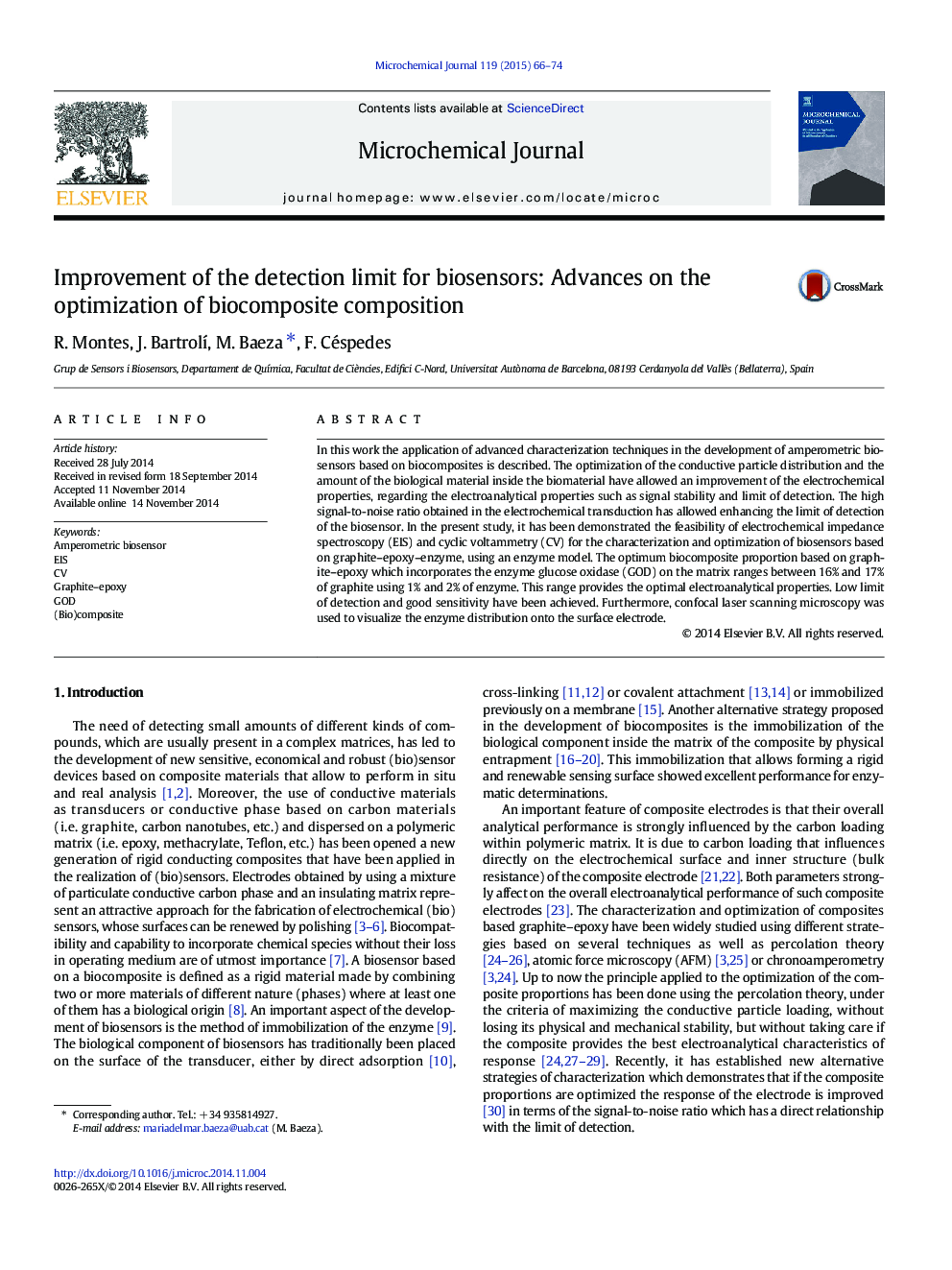| Article ID | Journal | Published Year | Pages | File Type |
|---|---|---|---|---|
| 1227732 | Microchemical Journal | 2015 | 9 Pages |
•EIS and CV applied to the optimization of biocomposite composition•Improvement of the electroanalytical response of the biocomposite electrode•Optimized biosensor achieves lower detection limit.•Confocal laser microscopy as tool to visualize the enzyme distribution on the electrode surface
In this work the application of advanced characterization techniques in the development of amperometric biosensors based on biocomposites is described. The optimization of the conductive particle distribution and the amount of the biological material inside the biomaterial have allowed an improvement of the electrochemical properties, regarding the electroanalytical properties such as signal stability and limit of detection. The high signal-to-noise ratio obtained in the electrochemical transduction has allowed enhancing the limit of detection of the biosensor. In the present study, it has been demonstrated the feasibility of electrochemical impedance spectroscopy (EIS) and cyclic voltammetry (CV) for the characterization and optimization of biosensors based on graphite–epoxy–enzyme, using an enzyme model. The optimum biocomposite proportion based on graphite–epoxy which incorporates the enzyme glucose oxidase (GOD) on the matrix ranges between 16% and 17% of graphite using 1% and 2% of enzyme. This range provides the optimal electroanalytical properties. Low limit of detection and good sensitivity have been achieved. Furthermore, confocal laser scanning microscopy was used to visualize the enzyme distribution onto the surface electrode.
